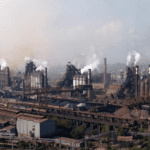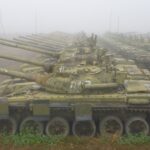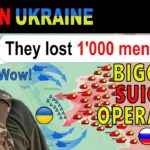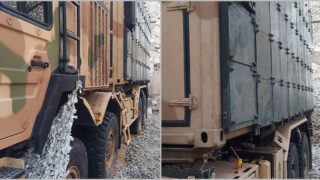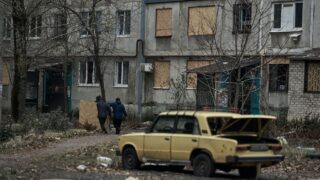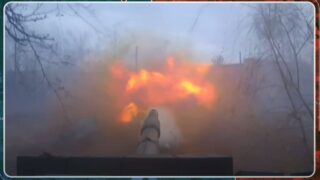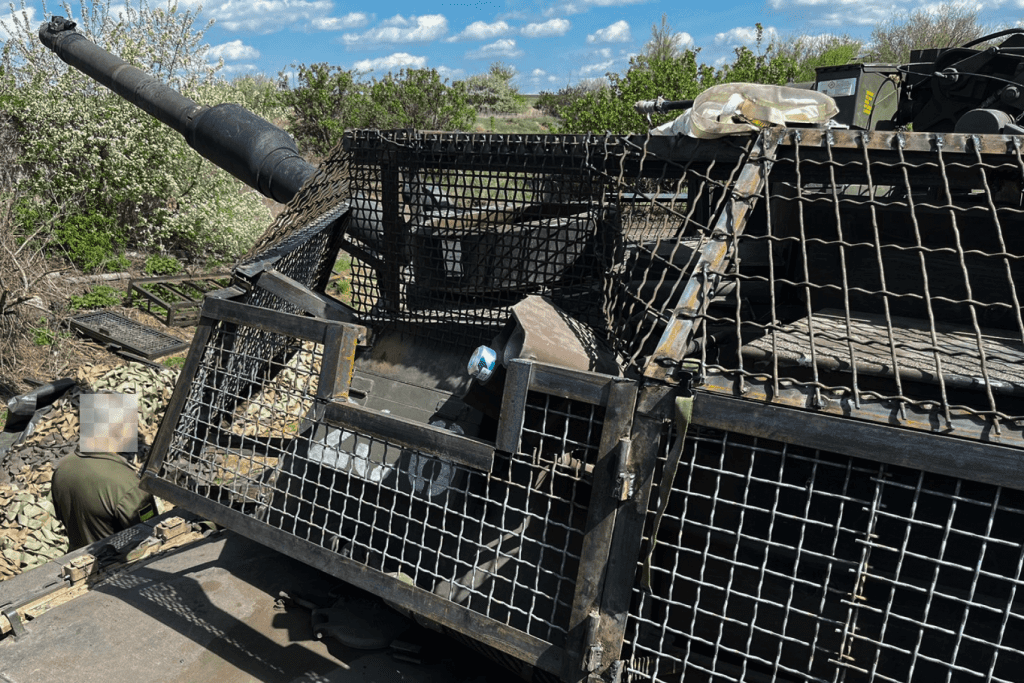
Cost-effective steel-screen Ukrainian solution outperforms Russian “turtle” tank protection
Recently, Ukrainian company Metinvest has developed a solution to protect military vehicles from FPV drone attacks, as part of its “Steel Front” initiative. The steel screens colloquially known as “cope cages,” designed to safeguard tanks and other armored vehicles, offer enhanced survivability without compromising mobility or functionality, according to Liga. Metinvest’s latest product is a metal net kit for the German-made Leopard 2 tanks.
Drones dominate the frontlines of the ongoing Russo-Ukrainian war. The widespread use of FPV drones by both sides has led to the development of protective kits for armored vehicles. Unlike Russian “ultimate” improvised solutions, dubbed “turtle tanks” due to their cumbersome appearance and impact on vehicle performance, the Ukrainian-made screens are lightweight and do not hinder the tank’s operational capabilities.
The use of protective metal screens for military equipment is not a totally new concept. Examples of their use date back to World War I, when facing German submarine threats, the British Royal Navy introduced anti-torpedo nets. During World War II, the German army introduced Schürzen – steel skirts on tanks to protect against anti-tank rifles and shaped charges. Various iterations and improvements were developed through World War II, the Cold War, and modern conflicts in Iraq and Afghanistan.
Currently, Metinvest’s steel screens are being used on Ukraine’s Soviet-era T-72 and T-64s, and American-supplies M1 Abrams tanks and Bradley IFVs. The first protective screens for German Leopard tanks have also been produced, with engineers now working on prototypes for light armored combat vehicles.
Oleksandr Myronenko, Chief Operating Officer of Metinvest Group, explained,
“Our screens function as nets that intercept drones and prevent them from contacting the body of the combat vehicle. This allows us to save both the equipment and its crew.”
The steel screens, weighing an average of 430 kg for an entire tank, are made entirely of steel components including metal structures for the frame, metal meshes, and rolled sheets. Despite the added weight, Myronenko emphasized that the screens do not affect maneuverability, speed, or combat mission performance.
The development process involves several stages, from sketching to producing the first test specimen and conducting trials. The entire journey from prototype to serial production takes between one week to a month, with rigorous testing performed before the screens are sent to the front.
The cost of manufacturing one screen is up to $20,000, which is a fraction of the cost of a tank, especially when compared to the $10 million price tag of an M1 Abrams. At present, the Ukrainian military receives these steel structures from the “Steel Front” initiative free of charge.
Myronenko noted that the company recently completed the development of protection for Bradley infantry fighting vehicles and light armored vehicles. Future production plans will depend on the army’s needs, he added.
The company also mass-produces decoys that mimic various types of military equipment.
Metinvest
Owned by Ukrainian oligarch Rinat Akhmetov, Metinvest is a Ukraine-based international steel and mining group with operations in Ukraine, Italy, Bulgaria, the UK, and the US. The company mines ore and coal, produces coke, smelts steel, and manufactures rolled products, pipes, and other steel goods.
In March 2017, Metinvest lost control of several assets, including Yenakiieve Steel, Yenakiieve Coke, Khartsyzsk Pipe, and Krasnodon Coal, after refusing to re-register these enterprises in Russian-occupied parts of Luhansk and Donetsk Oblasts. In 2022, Russia destroyed Metinvest’s Ilyich Steel and Azovstal plants in Mariupol. Later, the Russian strikes destroyed the company’s Avdiivka Coking Plant and other assets.
Related:

